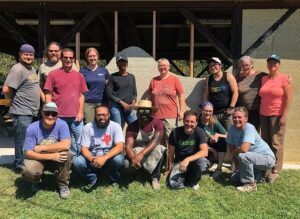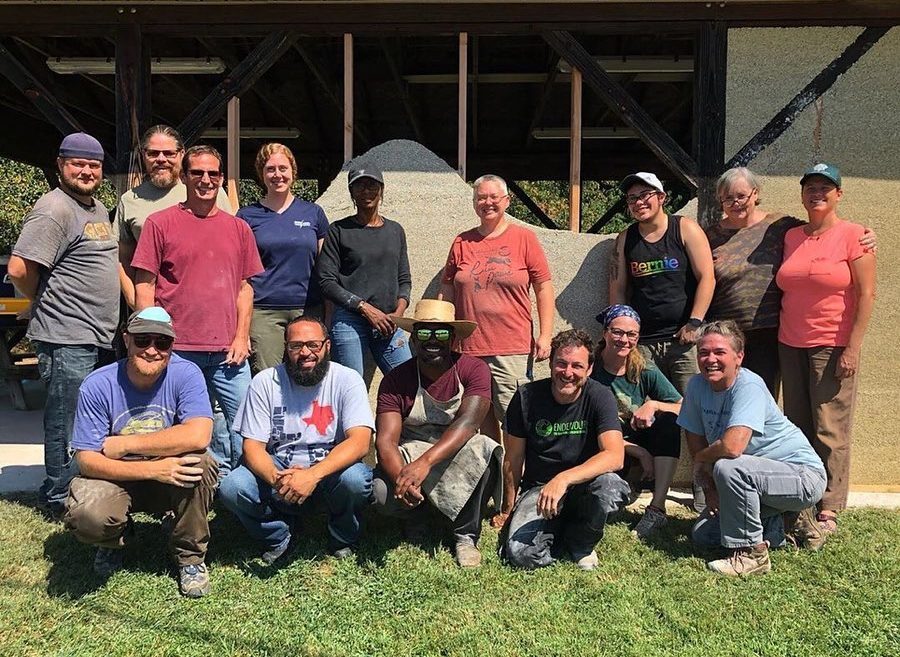Missed our weekend-long sustainable building workshop series with Chris Magwood? Event participant Kat McReynolds offered this recap of Chris’ “Design Your Own Sustainable Home” seminar, which holds the distinction of being the most popular workshop at Chris’ home base, The Endeavour Centre in Ontario, Canada.
As part of the Green Built Alliance’s regenerative design workshop series, author, speaker and longtime sustainable building guru Chris Magwood visited Asheville-Buncombe Technical Community College on Friday, Sept. 6, 2019
In addition to a talk on carbon capture earlier that day and a two-day hempcrete workshop on Saturday and Sunday, he led a comprehensive presentation Friday afternoon entitled, “Design Your Own Sustainable Home.”
At its core, Magwood’s speech prescribed a systematic approach to unpacking the abstract “green building” term. Conventional buildings already satisfy a host of goals like comfort, reasonable costs and timely construction, he explained, but individuals pursuing a higher degree of sustainability must unravel exactly what they want from a future green home before designing it.

For this task, Magwood suggested 10 sustainability criteria:
- Ecosystem impacts
- Embodied carbon
- Energy efficiency
- Waste
- Resilience
- Maintenance and durability
- Material costs
- Labor costs and sources of labor
- Code compliance
- Aesthetics
During his talk, Magwood elaborated on each concept, sharing definitions, items to consider and lessons learned in each category. For instance, some homeowners define resilience as an ability to survive extreme storms, while others expect comfort through lengthy power outages — two concepts with very different design implications.
Similarly, some clients are drastically more stringent than others with respect to indoor air quality and the use of harsh inputs in building materials. Such was the case when a trio of women with extreme chemical sensitivities challenged Magwood to build a house free from toxins. It was “jaw dropping” to research the prevalence of chemicals in building materials, he recalled, joking that he could probably sell arsenic countertops under current laws.
Under Magwood’s system of planning, clients undertake an educational deep dive into the 10 sustainability criteria before assigning a level of importance to each. The resulting “criteria matrix” whittles down the overwhelming number of building materials, systems and styles to a smaller pool of suitable options, eventually giving the designer a much clearer set of marching orders.
Due to time constraints and the scope of the talk, Magwood couldn’t fully elaborate on how scores in the criteria matrix might translate to certain building materials and systems being selected over others. However, he did illustrate how two matrices completed by different clients resulted in vastly dissimilar buildings. Presumably, Magwood’s book on the subject — Essential Sustainable Home Design — provides more guidance on making selections and design decisions based on a completed criteria matrix. At the very least, he has provided a methodical framework to guide people in thinking more critically about what their ideal “green building” really entails.
Kat McReynolds is a construction management student at Asheville-Buncombe Technical Community College and an apprentice with local construction firm Hewn. She earned her bachelor’s degree in entrepreneurship from the University of Miami and an MBA from Appalachian State University.


